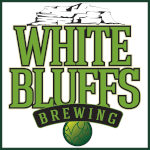I recently posted a story about a new beer from No-Li Brewhouse: a Japanese Lager. That story spawned some questions and comments on social media, so I thought I’d go into a bit more detail about this broad-ranging style of beer. Also, I will address the name. Should we call it rice lager, Japanese lager, or some combination of those things? For the sake of this article, I will use the term rice lager until I start talking about the name itself.
To create a rice lager, and this might not be news to a lot of you, the grist (the grain recipe) contains some rice. What percentage of the grain bill consists of rice varies widely. North Carolina’s Hi-Wire Brewing created a beer a few years ago, Japanese Dry Rice Lager, that earned a GABF gold medal. That beer was brewed using an eye-popping 49 percent rice in the grain bill. More recently, Recluse Beer Works of Washougal, Washington released Ugly Mug Rice Lager, which used 12.5 percent rice.

Recluse Beer Work’s approach is probably closer to normal. Along with rice syrup solids at a rate of 12.5 percent, the brewery used a blend of two North American pilsner malts along with some German dextrin malt and some acidulated malt. On top of that, a blend of three different hops provides low-level bitterness and just a kiss of hop aroma.
What Hi-Wire Brewing created using 49 percent rice would actually qualify as a happoshu in Japan–a sparkling beverage defined as being made with a malt content of less than two-thirds. So, if you make a beer with over one-third rice, it qualifies as a happoshu and is considered different than beer. The Japanese government taxes happoshu at a lower rate than beer. Here in the U.S., there is no such designation. Japan has its own reasons, and its own history, for taxing happoshu at a lower rate.
I don’t know what percentage of rice pFriem Family Brewers uses in its Japanese Lager, which has won some very impressive medals. The same goes for No-Li Brewhouse’s Japanese lager. In fact, a lot of American craft breweries are brewing rice lagers these days and how much rice each brewery uses probably varies greatly. I bet most breweries would happily share the information, but I’m okay with it being somewhat mysterious.

Brewing with rice can prove a bit tricky for a couple reasons. Primarily, a brewer must convert the starches to fermentable sugar. Same thing for malted barley, but brewers are accustomed to working with malted barley, and rice presents a different set of challenges. The processes and ingredients vary. Brewers sometimes use a version of cooked rice (Minute Rice, or equal) or cook the rice before using it in the mash. One brewery might use rice syrup solids, like Recluse Beer Works. Another might use high-quality rice in its raw form and convert it in the brewhouse using a cereal cook process, like pFriem Family Brewers. Other methods employ rice malt, flaked rice, and other rice products. Again, I’m okay with it being somewhat mysterious.
In brewing terms, rice is an adjunct. Brewers use the term adjunct to refer to an ingredient other than malted barley that adds fermentable sugar to the beer-making process. In that regard, rice lager is not too different than a beer created using corn in the grist. Adjunct is not necessarily a dirty word, though some folks might think otherwise. Don’t blame the rice; it is a perfectly lovely ingredient when used properly.
The largest brewery in the United States brews one of its flagship beers using a significant portion of rice. Perhaps that’s why some breweries choose to use the term Japanese lager instead of rice lager. It differentiates a craft brewery’s beer from that well-known, mega brew from Anheuser-Busch.
History of Rice Lager
Brewers in Japan, like in many other places around the world, began brewing beer in the 1800s and sought to emulate the style and quality of beers brewed in Germany. They imported German brewing equipment, hired German brewmasters, and imported the ingredients, which probably wasn’t cheap. Back in those days, as it is today, Japan grew a lot of rice, but not a lot of barley, so brewers there began to look for ways to incorporate rice into their recipes.

“In Japan, they have an abundance of rice and very, very high-quality rice, so they started integrating that into brewing, not to dumb down the brewing or to make it more watery, but to actually add another flavor, to create another dimension,” says Josh pFriem, one of the founders of pFriem Family Brewers. “And then this developed into something that was uniquely their own, what we now know as Japanese lager.”
When you encounter a beer designated as a dry lager, it is very likely some version of a rice lager. In 1987 Asahi introduced its Asahi Super Dry beer. It remains a very popular Japanese beer. The company claims it was the first dry beer. Perhaps it was the first beer designated as such, and several American mega-brewers soon thereafter introduced their own versions of beers with the term dry in the name, but in Japan using rice to provide beer with a drier character is a much older tradition.
The Character of Rice Lager
“It’s very delicate in nature,” adds pFriem. “It leans into more of a realm of sake, where you have like a very jasmine-type character, then the hops play in a beautiful way off of that malt and rice. This lends to a beer that’s more delicate than a pilsner, but much more interesting than an industrial lager.” (You can check out a video of Josh pFriem talking about his brewery’s Japanese lager here. It’s quite informative.)
According to Gus Everson at Recluse Beer Works, “It should be light in flavor and aroma, fizzy, and refreshing. My mind always goes to something produced in an efficient, industrial fashion. The fun being the careful attention to detail to create a delicately simple beverage.”
“I personally have a hard time talking about rice lager without also considering the other side of the adjunct lager coin: corn,” says Everson. “It seems to me that rice can impart a slightly more elegant flavor and aroma to these light, refreshing beers and that could contribute to why it is more often singled out by name over its counterpart. Both rice and corn do help lighten up beers in their own beautiful way.”
Regarding the name, no one should begrudge a brewery for calling its rice lager a Japanese lager. It is not the perpetuation of a stereotype. It is a respectful nod to the history behind this style of beer. It is a term used in reverence, acknowledging the proud tradition started by breweries like Asahi and Sapporo more than a century ago. By the same token, if a brewery decides to call it a rice lager instead of a Japanese lager, that’s fine too.
Do you enjoy and value the kind of news and info we share? Leave a review of the Washington Beer Blog on Google. We appreciate it!

































